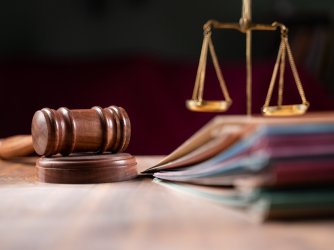Table of Contents
Speech codes subvert higher ed’s core purpose. Here’s how to fix them.

Shutterstock.com
Each year, FIRE releases a report on the trends we see in our Spotlight database of speech codes — which compiles the written policies that govern student speech at nearly 500 colleges and universities across the country. And each year, we get the same questions:
- What’s the problem with speech codes?
- Does FIRE think there shouldn’t be any limits to what sort of speech is allowed?
- Aren’t restrictions on when and where students can express themselves outside the classroom okay, to limit disruptions?
- Aren’t civility codes necessary to create an environment that supports civil discourse?
- Is FIRE doing anything to help fix speech codes?
With our latest annual report released last month, we thought we’d take the opportunity to answer each of these common questions.
What’s the problem with speech codes?
“Speech code” is the general term we use for policies that restrict speech that is protected under First Amendment standards. Such restrictions are unconstitutional at public colleges, and the vast majority of private schools commit in writing to protecting student free speech rights, so they’re impermissible there, too.
Speech codes subvert the central purpose of an institution of higher education: the pursuit of knowledge. If students are unable to research and debate all topics, including the most challenging or controversial ones, this purpose goes unfulfilled.

New FIRE report finds 85% of top colleges have restrictive speech codes
Press Release
FIRE’s 2024 Spotlight on Speech Codes report rates 489 of America’s top colleges and universities on the degree to which their policies restrict student speech.
This impact isn’t limited to four years on campus. College students who hear that it’s best for those in authority to control what they can say and hear will expect that to continue after graduation. As a result, the idea that controversial viewpoints should be censored carries over to boardrooms and legislatures. The impulse to censor instead of debate, disagree, and craft arguments should not be the lasting legacy of a college education.
Some colleges, after seeing how FIRE rates their policies, have argued they don’t actually apply the policies as restrictively as they are written. But that isn’t good enough. The presence of bad policies on the books that can be invoked at any time can chill speech even when administrators aren’t in the practice of using them to punish protected expression.
Instead, colleges must create an environment in which students know they can explore and express themselves on all topics without fearing the administration will censor them using an overbroad or vague policy.
Does FIRE think there shouldn’t be any limits to what sort of speech is allowed?
No. There are reasonable exceptions to the First Amendment defined and refined over years of judicial deliberation. Colleges must look to these exceptions in defining prohibited conduct rather than using poorly defined or undefined terms.
For example, taking action against conduct that constitutes harassment doesn’t violate the First Amendment. However, some schools’ harassment policies contain laughably broad language. Alabama A&M University, for one, defines sexual harassment as any “unwelcome and unsolicited . . . verbal, visual or physical conduct or communication with sexual overtones that the victim deems offensive.” And to be sure, some unwelcome sexual communication could create a hostile environment, per the standard set forth by the Supreme Court of the United States in Davis v. Monroe County Board of Education. However, Alabama A&M’s policy encompasses a lot more than that.
For example, if a student on their way to class simply sees another student holding a sign with a protest slogan on it that they find offensive (maybe “this pussy grabs back”), that isn’t sexual harassment. But if the other student repeatedly shows up outside a classmate’s dorm room with the sign, yelling their message and refusing to stop, that may indeed constitute hostile environment harassment. Alabama A&M’s policy prohibits both, which means students interested in engaging in protected speech with a controversial message may be too worried about being punished to do so.
The prevalence of overbroad rules on when, where, and how students can express themselves means too many students are discouraged from getting out on their campus and sharing their views.
This is an unacceptable result, and it’s not just hypothetical. Stockton University, for example, wielded its harassment policy to investigate a student for using a photo of Donald Trump as a Zoom background; American University investigated students for sharing pro-choice views in a group chat.
Bias reporting policies — which establish procedures for reporting speech others find expresses prejudice toward a person or group with particular characteristics — can also create serious threats to free expression on campus.
Some of these policies are written narrowly, seeking reports of unlawful harassment, threats, and other types of conduct that aren’t protected by the First Amendment. Others cast a wide net, seeking reports of all subjectively biased speech. Either way, schools need to clarify what happens when a report they receive concerns protected speech.
Any ambiguity here means students must assume they may be forced to meet with administrators for “educational” or “remedial” opportunities at best or receive formal punishment at worst. Suddenly, that debate on trans issues or that research into policing statistics may now seem like a bad idea. The result: Students may keep their mouths shut.
Whether in their policies around harassment, bias reporting, or First Amendment exceptions, colleges must follow the lead of First Amendment jurisprudence.
Aren’t restrictions on when and where students can express themselves outside the classroom okay, to limit disruptions?
Yes! — with some important caveats.
Under the First Amendment, public colleges (and private colleges that protect free speech rights) may put in place reasonable “time, place, and manner restrictions” on demonstrations in order to limit disruptions to regular college activities and functions. However, a valid time, place, and manner regulation of a public forum must be “narrowly tailored to serve a significant governmental interest,” and it must “leave open ample alternative channels for communication.”
Those caveats — that the restriction needs to be reasonable, narrowly tailored (i.e., not heavy-handed in achieving its goal), and that it needs to leave other options for students to reach their intended audience — are where colleges often misstep.
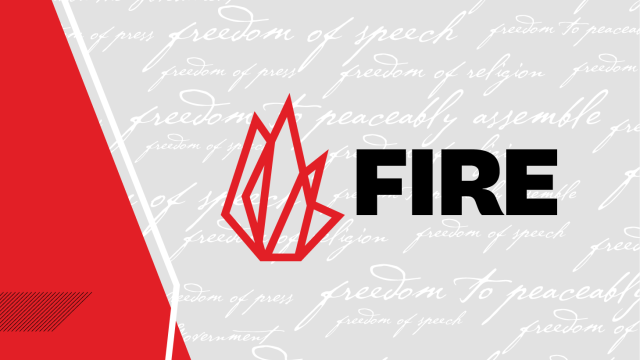
Unprotected Speech Synopsis
Issue Pages
FIRE's guide to speech not protected by the First Amendment for educators and students outlining incitement, threats, defamation, and hate speech
For example, a school might understandably want advance notice before students conduct an outdoor event that is likely to cause a disruption on campus — not because of the content or viewpoint of the event, but because it involves a large number of attendees or needs something like sound amplification equipment. And some further restrictions on certain indoor events may be reasonable, given students conducting a demonstration indoors could block hallways or disrupt classes.
But some schools go much further than is necessary to eliminate potential disruptions.
The University of Massachusetts Dartmouth, for example, tells students they must inform campus police 48 hours in advance of using the university’s sole designated area for demonstrations, whether they’re a group of three students or three hundred. Again, it makes sense to require large groups to use certain areas on campus for capacity reasons and to give notice in advance. But applying that rule to everyone isn’t reasonable.
The prevalence of overbroad rules on when, where, and how students can express themselves means too many students are discouraged from getting out on their campus and sharing their views.
Aren’t civility codes necessary to create an environment that supports civil discourse?
Some argue that in order to create a campus environment where students can learn and debate productively, colleges need to enforce certain standards of civility. FIRE thinks this is a dangerous impulse.
In an example of one such policy, Evergreen State College binds students to its “Social Contract,” which states: “The individual members of the Evergreen community are responsible for protecting each other and visitors on campus … from uncivil abuse. Civility is not just a word; it must be present in all our interactions.”
But civility is in the eye of the beholder. Take the way different people interpret the phrases “Black Lives Matter” and “Blue Lives Matter” — allowing campus administrators to decide what speech is too hostile to be expressed means they have the power to discriminate based on viewpoint. And, unfortunately, FIRE’s case history shows civility requirements are all too often wielded in this way.
Threatening punishment over failure to conform to amorphous standards of civility only creates a chilling environment for expression.
Requiring civility from students can even limit their ability to persuade others. As one federal judge put it, “mandating civility could deprive speakers of the tools they most need to connect emotionally with their audience, to move their audience to share their passion.”
To be sure, colleges can set aspirational standards of civility towards which students can strive, and they can teach students about engaging productively with those with whom they disagree. And, when inside the classroom, faculty have wide latitude in managing that setting, and can ask students to stop speaking if they’re being disruptive or off-topic.
However, threatening punishment over failure to conform to amorphous standards of civility only creates a chilling environment for expression.
Finally: Is FIRE doing anything to help fix speech codes?
We sure are. The purpose of publicizing our annual report on speech codes isn’t merely to name and shame colleges.
First of all, we’ve developed a model code of student conduct for colleges looking to adopt speech-protective policies. We also maintain a list of model policies currently in use by colleges and universities that other schools may consider. Colleges can also use our Spotlight database’s search function to find policies that earn a “green light” rating from FIRE, meaning they don’t seriously imperil free speech. (Here, for example, I searched for colleges with a green-light protest policy.)
FIRE staffers are also available to consult with schools free of charge, and can make recommendations on how to improve policies and review and provide feedback on drafts of new or revised speech codes.
If a school you care about is one of the vast majority of colleges with policies that restrict student speech, consider partnering with FIRE to change that.
Recent Articles
FIRE’s award-winning Newsdesk covers the free speech news you need to stay informed.
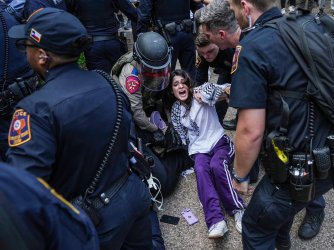
Texas tramples First Amendment rights with police crackdown of pro-Palestinian protests
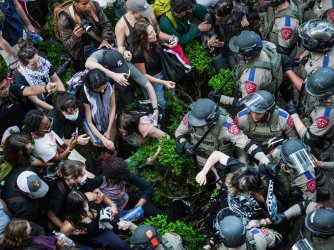
Here’s what students need to know about protesting on campus right now
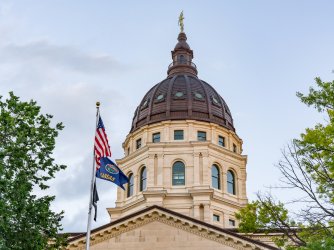
Kansas takes a stand for intellectual freedom
